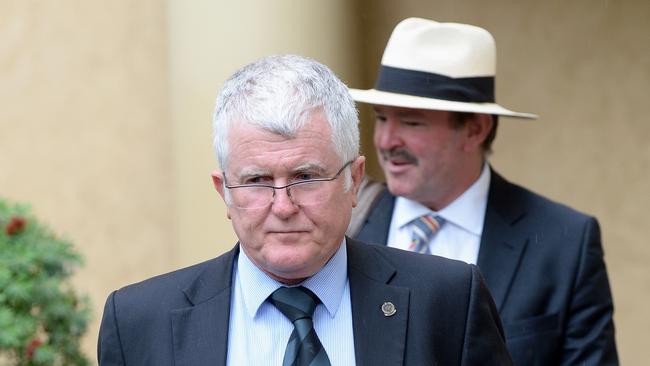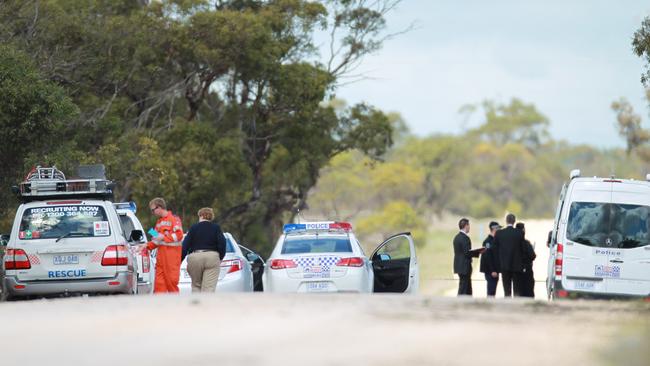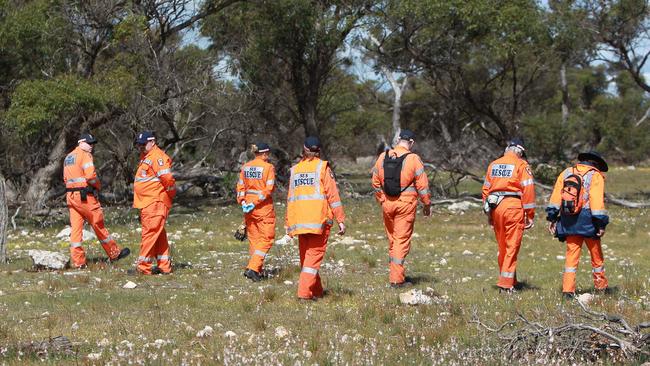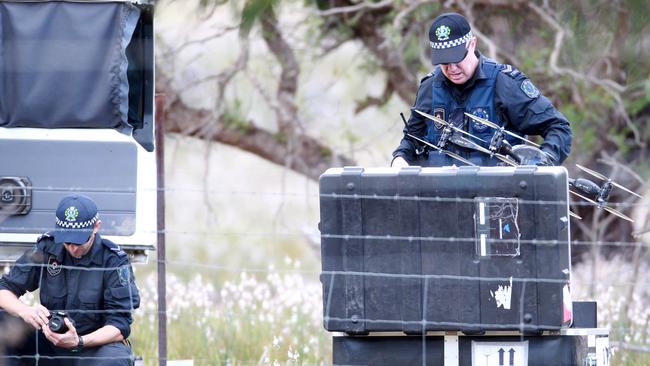Inquest into police shooting of Alexander Kuskoff hears helicopter vision of siege was ‘defective’
FOOTAGE taken from a helicopter of a fatal siege last month was “defective” and the second time there had been issues involving surveillance of police shootings, the State Coroner has heard.
SA News
Don't miss out on the headlines from SA News. Followed categories will be added to My News.
FOOTAGE taken from a helicopter of a fatal siege last month was “defective” and the second time there had been issues involving surveillance of police shootings, the State Coroner has heard.
Coroner Mark Johns opened on Tuesday an inquest into the shooting death of Alexander Kuskoff during a siege at his farm on Elwomple Rd, near Tailem Bend, on September 17.
Mr Kuskoff, 50, had fired guns at police during the five-hour standoff, which ended in him being fatally shot by a STAR Group officer from a range of 139m.
Counsel assisting the Coroner, Naomi Kereru, said police had been called to the property after concerns were raised by Mr Kuskoff’s mental health workers and his family.

Ms Kereru said Mr Kuskoff, who had a long history of mental health issues, was “behaving strangely” and “reportedly driving his family crazy” before police were called.
“Mr Kuskoff had made numerous triple-0 calls, making threats to bomb everyone and kill everyone with guns,” Ms Kereru said.

During the standoff, Mr Kuskoff allegedly fired a number of shots at officers and the police helicopter, which had been hovering above the property.
The court heard the helicopter was forced to move away from the scene and that settings on an in-flight recording system were altered, leading to footage of the incident being compromised.
Ms Kereru questioned Major Crime Detective Superintendent Des Bray about whether there were systemic problems with the flight recording system.
Ms Kereru referred to the inquest into the shooting of convicted armed robber Paul Quinn at Forestville in September 2010, which heard that vision taken from the police helicopter had failed to record.
“The footage that was available was only on audio, and that audio was a slowed down version, essentially making it useless to those viewing it,” Ms Kereru said.

Supt Bray said he was not aware if there were problems with the vision of the latest shooting, and said it would need to be assessed by experts.
“For an untrained eye like me, it is very difficult to see ... that really needs a qualified person to explain that,” he said.
The Coroner asked Supt Bray to pay particular attention to any changes that had been made to the helicopter video system since the inquest into Mr Quinn’s death.
Supt Bray told the inquest the STAR Group officer had not been instructed to fire upon Mr Kuskoff.
“Based on what I do know ... the person who fired the shot made the decision to fire the shot,” Supt Bray said.

Ms Kereru said two STAR Group officers using night-vision goggles and sights on their rifles had been hiding in trees some distance from Mr Kuskoff when he began firing in their direction.
“Mr Kuskoff reportedly levelled and aimed his gun in their direction, they heard projectiles travelling through the tree branches and falling to the ground around them,” she said.
Mr Kuskoff was hit twice in the chest and abdomen and died at the scene.
He was found to be armed with a high-powered Russian brand rifle that fired 6.5mm rounds and had a 9mm pistol concealed in the back of his pants.
Supt Bray said that while he had ultimate responsibility for the investigation into the shooting, a senior officer from another branch had been seconded to spearhead the probe.
He denied that was because of a resource issue within Major Crime, adding that he would be given extra staff to run investigations if required.
The inquest was adjourned until December to allow police to continue obtaining witness statements and forensic reports.


